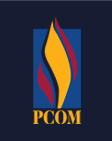Thoracolumbar instrumentation with CT-guided navigation (O-arm) in 270 consecutive patients: Accuracy rates and lessons learned
Document Type
Article
Publication Date
2014
Abstract
Object: Thoracolumbar instrumentation has experienced a dramatic increase in utilization over the last 2 decades. However, pedicle screw fixation remains a challenging undertaking, with suboptimal placement contributing to postoperative pain, neurological deficit, vascular complications, and return to the operating suite. Image-guided spinal surgery has substantially improved the accuracy rates for these procedures. However, it is not without technical challenges and a learning curve for novice operators. The authors present their experience with the O-arm intraoperative imaging system and share the lessons they learned over nearly 5 years. Methods: The authors performed a retrospective chart review of 270 consecutive patients who underwent thoracolumbar pedicle screw fixation utilizing the O-arm imaging system in conjunction with StealthStation navigation between April 2009 and September 2013 at a single tertiary care center; 266 of the patients underwent CT scanning on postoperative Day 1 to evaluate hardware placement. The CT scans were interpreted prospectively by 3 neuroradiologists as part of standard work flow and retrospectively by 2 neurosurgeons and a senior resident. Pedicle screws were evaluated for breaches according to the 3-tier classification proposed by Mirza et al. Results: Of 270 patients, 266 (98.5%) were included in the final analysis based on the presence of a postoperative CT scan. Overall, 1651 pedicle screws were placed in 266 patients and yielded a 5.3% breach rate; 213 thoracic and 1438 lumbosacral pedicle screws were inserted with 6.6% and 5.1% breach rates, respectively. Of the 87 suboptimally placed screws, there were 13 Grade 1, 16 Grade 2, and 12 Grade 3 misses as well as 46 anterolateral or "tipout" perforations at L-5. Four patients (1.5%) required a return to the operating room for pedicle screw revision, 2 of whom experienced transient radicular symptoms and 2 remained asymptomatic. Interestingly, the pedicle breach rate was higher than anticipated at 13.21% for the 30 patients over the initial 6-month period with the O-arm. After certain modifications to the authors' technique, the subsequent 30 patients experienced a statistically significant decrease in breach rate at 5.6% (p = 0.014). Conclusions: Image-guided spinal surgery can be a great option in the operating room and provides high pedicle screw accuracy rates. With numerous systems commercially available, it is important to develop a systematic approach regardless of the technology in question. There is a learning curve for surgeons unfamiliar with image guidance that should be recognized and appreciated when transitioning to navigation-assisted spinal surgery. In fact, the authors' experience with a large patient cohort suggests that this learning curve may be more significant than previously reported. ©AANS, 2014.
Publication Title
Neurosurgical Focus
Volume
36
Issue
3
Recommended Citation
Rivkin, Mark A. and Yocom, Steven S., "Thoracolumbar instrumentation with CT-guided navigation (O-arm) in 270 consecutive patients: Accuracy rates and lessons learned" (2014). PCOM Scholarly Works. 1488.
https://digitalcommons.pcom.edu/scholarly_papers/1488

Comments
This article was published in Neurosurgical Focus, Volume 36, Issue 3.
The published version is available at http://dx.doi.org/10.3171/2014.1.FOCUS13499.Copyright © 2014.